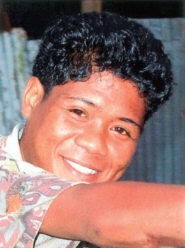Bonerate in Indonesia

Photo Source:
Copyrighted © 2026
Anonymous All rights reserved. Used with permission |
Send Joshua Project a map of this people group.
|
| People Name: | Bonerate |
| Country: | Indonesia |
| 10/40 Window: | Yes |
| Population: | 45,000 |
| World Population: | 45,000 |
| Primary Language: | Bonerate |
| Primary Religion: | Islam |
| Christian Adherents: | 0.09 % |
| Evangelicals: | 0.04 % |
| Scripture: | Translation Started |
| Ministry Resources: | No |
| Jesus Film: | No |
| Audio Recordings: | No |
| People Cluster: | Tukangbesi of Sulawesi |
| Affinity Bloc: | Malay Peoples |
| Progress Level: |
|
Introduction / History
The Bonerate live on the islands of Bonerate, Madu, Lalaotoa, Karompa and Selayar in the South Sulawesi Province. These islands are part of the districts of Bonerate, Passimasungu (North Bonerate) and Passimasungu (North Bonerate) and Passimarane in the Selayar Regency. Bonerate Island is in a very remote location.
Their primary language is the Bonerate language, which is made up of two dialects, Bonerate and Karompa. The Bonerate language is part of a larger linguistic grouping called the Muna-Buton which also includes the East Buton (Kumbewaha and Lasalimu), Cia Cia, Kaimbulawa, Busoa, Wakatobi (Tukang Besi North and Tukang Besi South).
What Are Their Lives Like?
There has been a steady population drain from Bonerate due to people moving to other parts of Sulawesi, such as Makassar, Kendari and Toli-Toli. The Bonerate typically move to Makassar to seek a better education and employment. Quite a few Bonerate have become cloth and bread sellers in urban markets. Many have migrated to Toli-toli and Kendari with the hope of receiving broader, more fertile farmland for a cheaper price. The Bonerate people make a living primarily through fishing and farming. The primary crops are cassava, sweet potatoes, cloves and sago palm. These are grown organically. Bonerate farmers struggle to grow other types of vegetables because the land is too dry. Vegetables are brought in from other islands. They also eat marine food such as seaweed, teripang, lola and bole-bole. The main foods of the Bonerate are cassava, sago and sweet potatoes. Bonerate houses are built on raised platforms with a vacant space underneath used for storage. Houses are neatly arranged in rows, with two rows of houses as long as the island. One row of houses is nicer due to differing levels of income. Bathing and bathroom needs are carried out on the shoreline.
What Are Their Beliefs?
The majority of Bonerate people are Muslims who are also influenced by strong animistic beliefs. Primarily, they believe that a powerful spirit inhabits the sea. When heavy winds and high waves occur, the people often believe that this ruler of the sea is angry. Various ceremonies and rituals are used to pacify the sea spirit.
What Are Their Needs?
A well-known asset of the Bonerate is the National Takabonerate Park. This park spreads over 220,000 hectares, which includes 21 small islands near the Flores Sea. The Atol Takabonerate is the third largest atol (circular coral reef) in the world after Kwajifein Atol in the Marshal islands and the Suvadiva Atol in the Maldives. Sea transportation is inadequate to reach this atol that might offer a million dazzling enchantments. A large port is needed that could accommodate large ships and smaller boats which could make the trip into these islands. The presence of a port would facilitate the sea crossing between Selayar and Kupang in East Nusa Tenggara. If this could be made available, it would help mobility and spur economic growth in this area.
Prayer Points
Pray for the Lord to give the Bonerate people an abundant crop this year as a testimony of his power and love.
Pray for Holy Spirit sent workers to the Bonerate people.
Pray for Bonerate elders to embrace the gospel and allow it to penetrate their society.
Pray for Bonerate disciples to make other disciples who will make even more disciples.